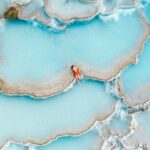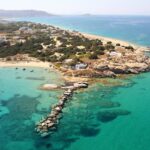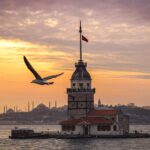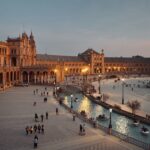A Winter Symphony: Wild Swans and Waterbirds of Enez and Gala Lake
As the crisp winter air descends upon Thrace, the landscapes around Turkey’s border with Greece undergo a remarkable transformation. The once-familiar chorus of summer birds is replaced by the haunting cries of thousands of winter visitors. Nowhere is this seasonal spectacle more dramatic than in the wetland ecosystems of Lake Gala and the Enez Floodplains, a region that becomes a stage for one of nature’s most majestic ballets: the arrival of the wild swan communities.
This vast area, part of the **Meriç Delta (Meriç Deltası)**, is a mosaic of freshwater lakes, vast reedbeds, marshes, and floodplain forests. Recognized as a National Park and a Key Biodiversity Area, it serves as a critical winter refuge and a vital stopover on the migratory highway between Europe and Africa. In winter, it truly comes alive.
The Sovereigns of the Winter Wetlands: The Swans
The undisputed stars of the winter season are the swans. Their immense, pure-white forms, gliding serenely across the grey waters, are a sight that borders on the mythical. Two primary species grace these wetlands:
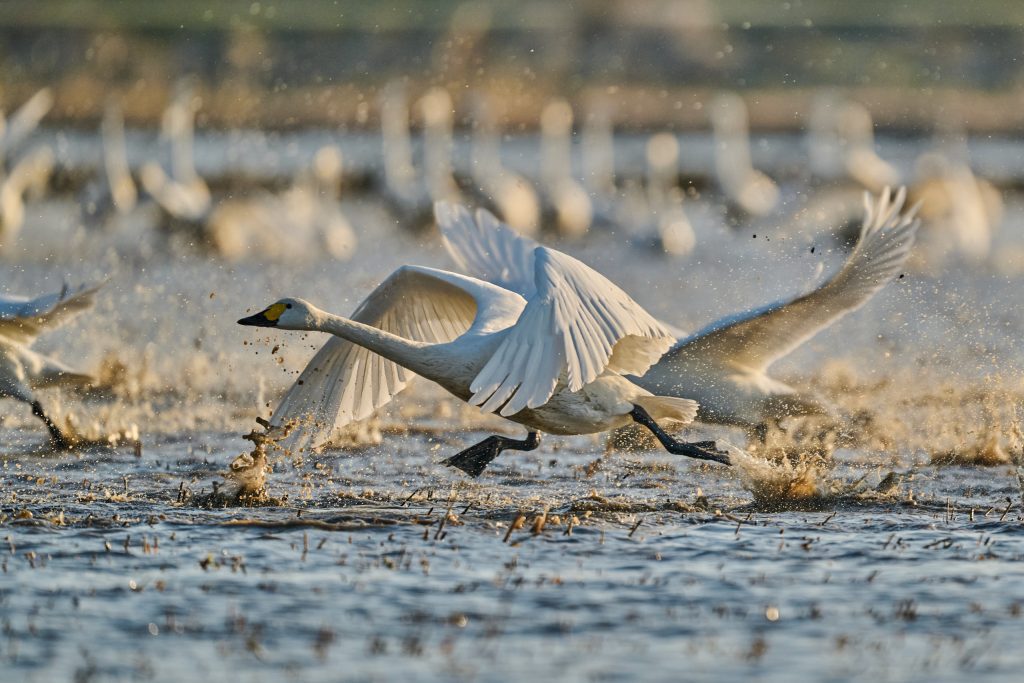
1. The Whooper Swan (Cygnus cygnus)
This is the classic “wild swan” of fairy tales. Identified by its elegant, straight neck and a powerful, lemon-yellow bill that extends in a wedge shape to its eye, the Whooper Swan is a winter migrant from the remote tundras and taigas of Northern Europe and Siberia. Their presence is often announced by their iconic, loud, and melodious trumpeting calls—a sound that truly defines the wild atmosphere of the region in winter. Seeing a large flock of these birds take flight, their powerful wingbeats audible from a distance, is an unforgettable experience.
2. The Mute Swan (Cygnus olor)
While many Mute Swans are resident in parts of Europe, the population in the Meriç Delta is often supplemented by winter visitors. They are easily distinguished from their whooping cousins by their gracefully arched necks and distinctive orange bill with a black knob at its base. True to their name, they are generally much quieter, though they can produce a variety of hisses and grunts.
These swans congregate in the shallow, nutrient-rich waters of Lake Gala and the Enez floodplains to feed on submerged aquatic plants, finding safety and sustenance in the protected waters of the national park.
Beyond the Swans: A Cast of Thousands
While the swans command attention, they are merely the headliners in a vast and diverse winter ensemble. A patient observer will be rewarded with sightings of countless other birds:
Raptors in the Reeds: Keep your eyes on the skies for the marsh’s top predators. The Western Marsh Harrier quarters low over the reeds, while the majestic White-tailed Eagle, one of Europe’s largest birds of prey, can often be seen perched imposingly on a distant tree or soaring over the lake.
A Sea of Waterfowl: The lakes teem with ducks. You’ll find vast rafts of Common Pochard, Tufted Duck, and Eurasian Wigeon. The elegant Northern Shoveler sweeps its spoon-shaped bill through the water, and the striking Red-crested Pochard adds a splash of color.
Stately Waders: The shallow shores and mudflats are alive with wading birds. Look for the long-legged Grey Heron and Great Egret standing motionless, while flocks of Northern Lapwing wheel overhead, their crested silhouettes unmistakable against the winter sky.
Noisy Gatherings: The air is filled with the sounds of thousands of Eurasian Coots, their constant chatter creating a backdrop of noise. Large, chattering flocks of Geese, primarily Greater White-fronted Geese, can also be seen and heard flying in characteristic V-formations.
Why Enez and Gala Lake are a Winter Haven
The success of this ecosystem as a wintering ground is no accident. The combination of shallow waters, extensive reed beds for shelter, and an abundance of aquatic vegetation and small fish provides a perfect larder for birds to survive the winter. The protected status of the area as a National Park is crucial in safeguarding this vital habitat from development and disturbance.
Planning Your Visit
When to Go: The best time is from **December through February**. Early mornings and late afternoons offer the most active birdlife and the best light for photography.
What to Bring: Essential items include **warm, layered clothing** (it can be very cold and windy), **waterproof boots**, your camera with at least 400 mm lens or a high-quality pair of **binoculars**, and a **spotting scope** if you have one, as the birds can often be distant.
How to Explore: Use your car as a mobile blind. Drive slowly along the roads that skirt the lakes and floodplains, stopping frequently to scan the waters. There are also observation towers and hides in certain areas; use them to get a better vantage point without disturbing the wildlife. Always maintain a respectful distance.
Responsible Birdwatching: Remember you are a guest in their winter home. Avoid loud noises, do not attempt to flush birds into flight, and leave no trace of your visit.
Book a 3-day tour with Eskapas
A winter trip to Enez and Gala Lake is more than just a birdwatching excursion; it is a pilgrimage into the heart of a wild and dynamic landscape. It is a chance to witness the timeless spectacle of migration and to stand in awe of the majestic swans, whose graceful forms against the winter horizon are a powerful reminder of nature’s enduring beauty and resilience.





